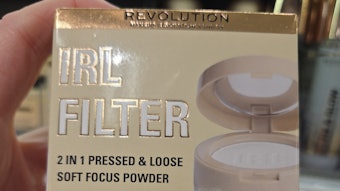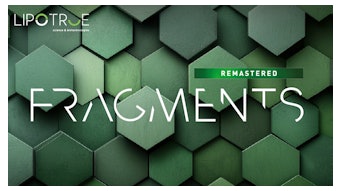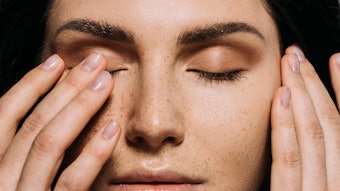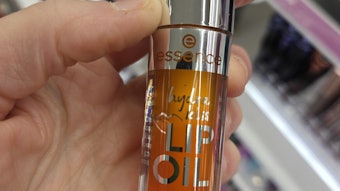Vitamin A in the form of all-trans retinol is a popular component of cosmetic anti-aging creams due to its effects in rejuvenating skin, smoothing wrinkles and enhancing elasticity. Although retinol aids in the creation of stronger, healthier skin,1, 2 its incorporation into dermal creams is problematic due to the highly fragile nature of the molecule. Retinol is a naturally occurring hydrophobic compound with a polyolefinic structure that is subject to facile isomerization to cis-isomers, with lowered biological activity,3 upon exposure to light. Moreover, the photo-sensitive molecule is also rapidly degraded by oxygen and elevated temperatures. Chemists handling retinol in the laboratory employ inert atmosphere, e.g., nitrogen or argon, in the absence of light since significant degradation occurs after several hours of exposure to air.4 Derivatives such as retinyl acetate, propionate and palmitate esters are less susceptible to decomposition but are also less active, requiring an additional hydrolysis step to release retinol in the skin.2
For practical handling purposes, it would therefore be advantageous to stabilize retinol by encapsulating it in a carrier, which is also beneficial in that it would allow for the incorporation of stabilizers such as butylated hydroxytoluene (BHT) and vitamins E and C, widely used as antioxidants. Furthermore, the use of a carrier could help to address the limited aqueous solubility of retinol. Indeed, there has been considerable research interest in developing methods for stabilizing retinol in a range of host materials. Examples include liposomes,5 polymers,6 solid lipid nanoparticles,7 chitosan8 and silica microparticles9—even a combination of materials to give a multiply stabilized system.10
Clearly, however, the necessity to protect retinol from the surrounding environment must be balanced with the ease by which the molecule can later be released from the host matrix. There is considerable evidence for improved stability in the encapsulated form, as evidenced by the number of stabilized retinol/carrier products that are available commercially. In response, the author’s company has developed a process for encapsulating retinol as part of a wider technology for the encapsulation of hydrophobic molecules into organosilica microparticles. The synthetic procedures employed are sol-gel based and conducted at an ambient temperature and benign pH to form ceramic particles in which the active molecules are fully encapsulated. This technology minimizes the release of the active in aqueous conditions but rapidly releases it under lipophilic conditions.
Here, the authors evaluate co-encapsulated all-trans retinol and BHT in both vinylsiloxane and phenylsiloxane particles, corresponding to two of the most commonly used organically substituted silicon alkoxides, vinyltrimethoxysilane and phenyltrimethoxysilane. The organic substitution is necessary from a processing perspective to enable the co-encapsulation of hydrophobic compounds, but the resulting particles are hydrophilic and easily incorporated into aqueous mixtures. The results of stability tests are compared to assess the retention of bioactivity in encapsulated retinol in samples exposed to air at ambient temperature for periods of up to 40 days. Further, the stability of encapsulated retinol is compared with that of several commercially available stabilized retinols—also containing similar concentrations of BHT—to assess to what extent the ceramic matrix contributes protection from oxidation.
Experimental Design
Sample synthesis: The general methodology behind the hydrophobe encapsulation method is to form an o/w microemulsion using a suitable alkyl phenol ethoxylate surfactant in a 1:20 mass ratio. An organosilica precursor is added to the emulsion with the hydrophobe of interest. Rapid hydrolysis and condensation of the precursor results in the formation of spherical particles inside the oil droplets and encapsulation of the hydrophobe located therein.
Equal masses of solid retinol, 3100 units/mg, and BHT > 99%a were agitated on a shaker with either vinyltrimethoxysilane or phenyl-trimethoxysilane for 30 min, then added to the emulsion and stirred for 5 min to homogenize. An amine catalyst was added to the emulsions to hydrolyze and condense the organosilica precursors. Stirring was continued for 4 hr, after which the particles were separated by centrifugation and washed with water to remove excess surfactant. The resulting yellow pastes were stored undried at 6°C for ease of redispersal but sub-samples were dried under nitrogen for measurement of retinol loading.
Characterization: Retinol loadings were calculated by leaching the retinol from dried samples into ethanol and analysis by high performance liquid chromatography (HPLC)b. The UV and visible spectra of doped and undoped phenylsiloxane particles dispersed in polytetrafluoroethylene (PTFE) powder, 10% w/w, were measured using a spectrometerc equipped with an accessory for measuring diffuse reflectance spectra. SEM imagesd were recorded of samples washed with ethanol to remove excess surfactant. Particle size distributions were measured in water using static light scatteringe.
Air stability study: Two commercial stabilized retinols, one liquid and one solid—designated as commercial 1 and commercial 2, respectively—were tested and compared with the retinol-loaded organosilica particles. Two sets of data were recorded: one in which all samples were stored for a day in nitrogen to dry the organosilica particles, then exposed to air; and another that was exposed to air immediately so that the organosilica particles dried in an oxidative environment. Following the initial drying step, the masses of all samples were monitored to adjust for loss of residual water with continued air exposure. No change in mass was detected for the commercial samples, which were non-volatile.
At approximately weekly intervals, subsamples were either dissolved in suitable solvents, in the case of the commercial samples, or leached into ethanol, in the case of the organosilica particles. The leached samples were conducted in duplicate and the results averaged. The mass percentage of active retinol was measuredf using the visible absorption band at 325 nm. For comparison with the stabilized samples, free retinol was exposed to air for 2 hr, then redissolved in ethanol and compared with the spectra of freshly dissolved retinol.
Results and Discussion
The retinol loadings, per mass of dried particles, were found to be 11.7 ± 0.2% and 13.9 ± 0.2%, corresponding to an encapsulation efficiency of 79% and 65% for vinylsiloxane and phenylsiloxane, respectively. This retinol loading was approximately double that of the commercial samples selected.
UV/visible spectra of both retinol doped and undoped phenysiloxane particles dispersed in PTFE powder, 10% w/w, are shown in Figure 1. The retinol-doped sample had a strong absorption band at 335 nm. The undoped sample had weaker absorption peaks at 266 nm, 272 nm and 284 nm, which are characteristic absorption bands of the phenyl group comprising the organosilica matrix.
Also, SEM images (see Figure 2) showed that the particles are spherical and, in the case of the vinylsiloxane sample (see top in Figure 2), the majority of particles had a size ~250 nm, with some larger micron-sized particles also present. The phenylsiloxane particles (see bottom in Figure 2) were similar but appeared to contain a significantly larger portion of micron-sized particles. Particle size distributions (see Figure 3) showed that the average particle size for the samples was ~250–300 nm.
The spectra of retinol in ethanol solutions are shown in Figure 4. Curve a) corresponds to a freshly dissolved retinol solution in ethanol with a concentration of 7 mg/mL. A standard retinol solution was dried overnight under nitrogen. The fine precipitate was then exposed to air for 2 hr in the absence of light and redissolved in ethanol to give a solution of 14 mg/mL, as shown by curve b). Even at double the concentration, significant degradation of the 325 nm peak was clearly observed after just a 2-hr exposure to air, and new bands appeared at wavelengths < 300 nm, corresponding to oxidation products.
Stability of Encapsulated Retinol in Air
The absorption spectra of the commercial samples reveal significant degradation over the test period, although at a much slower rate than observed for unencapsulated retinol. Figure 5 shows the spectra obtained, in units of AU/mg, for the solid commercial sample (commercial 2) dried in air and exposed to air up for 32 days. The gradual disappearance of the main peak is evidence of the oxidation of retinol. In contrast, the spectra of retinol leached from the organosiloxane particles showed minimal change with time.
Figure 6 shows the spectra of the phenylsiloxane samples after 1 day and 40 days, respectively, of exposure to air. The sample dried in air shows some degradation, whereas that dried in nitrogen before exposure to air shows no change. The spectra of the vinylsiloxane samples show similar trends, with greater degradation when dried in air. Plots showing the change in retinol activity over a 40-day period for all samples are shown in Figure 7. For ease of comparison, the data has been normalized by ratioing to the first measurements to show the percent of change with time. The dotted lines in Figure 7 indicate the correction required to adjust for the mass change due to additional drying of the ceramic particles over the 40-day period.
In comparison with these values, the ceramic samples dried in air exhibited a 20% and 40% decrease in activity after 40 days for phenysiloxane and vinyl-siloxane, respectively. It is possible that the larger particle size of the phenyl-siloxane resulted in better protection of the particles. The ceramic samples, which were dried under nitrogen before exposure to air, showed considerably less degradation upon exposure to air, ~10% for both phenylsiloxane and vinylsiloxane. This suggests that the dried matrix is effective in reducing air permeation into the particles. Comparison with rates of degradation in the commercial samples showed that the ceramic matrix performed well in protecting against oxidation.
Next Steps
The described ceramic organosilica matrix appears promising as a means of stabilizing retinol when co-encapsulated with an antioxidant. Release tests (data not shown) in lipophilic conditions, e.g., in alcohol, resulted in rapid release of retinol from the ceramic matrix. It remains to be tested how effectively retinol can be released from particles when applied to the skin. Collaborative work by the authors has found no evidence of penetration through the skin by particles of this size. Nevertheless, there is potential for the submicron particles to become imbedded in the outer layer of the skin and to release retinol when in contact with natural skin oils.
Conclusion
Retinol is a fragile molecule that rapidly oxidizes upon exposure to air. However, its co-encapsulation with butylated hydroxytoluene in a protective matrix (liquid or solid) is an effective means to protect against oxidation. Here, retinol has been successfully encapsulated in organosilica microparticles with loadings of ~12–14% w/w, and tests comparing these organosilica particles and two commercial stabilized retinols, all stabilized with BHT, show a vast increase in stability in air, compared with unencapsulated retinol, which degrades within hours of exposure. The organosilica matrices also compared favorably with alternative stabilized retinols, showing minimal degradation in air, ~10%, after 40 days when the particles were dried under nitrogen before exposure to air.
The ceramic organosilica matrix is a somewhat novel encapsulant for retinol and hydrophobes in general because while it is effective in encapsulating hydrophobic materials, the matrix itself is hydrophilic and mixes easily into aqueous formulations. The submicron size of the particles also aids blending into aqueous mixtures and is advantageous for application to the skin, presenting a potential alternative for formulators of skin care products.
References
Send e-mail to [email protected].
1. R Kafi et al, Improvement of naturally aged skin with vitamin A (retinol), Arch Dermatol 143 606–612 (2007)
2. A Jentzsch and P Aikens, RetiSTAR for Cosmetic Formulations: Stabilized Retinol, in Delivery Systems Handbook for Personal Care and Cosmetic Products: Technology, Applications and Formulations, MR Rosen, ed, William Andrew Inc, New York (2005) pp 861–872
3. M Kofler and SH Rubin, Physicochemical assay of vitamin A and related compounds, Vitamins and Hormones 18 315–339 (1961)
4. Sigma Aldrich, www.sigmaaldrich.com/etc/medialib/docs/Sigma/Datasheet/6/ 95144dat.Par.0001.File.tmp/95144dat.pdf (Accessed Mar 16, 2011)
5. I Arsic, S Vidovic and G Vuleta, Influence of liposomes on the stability of vitamin A incorporated in polyacrylate hydrogel, Intl J of Cos Sci 21 4 219–225 (1999)
6. SK Klee, M Farwick and P Lersch, Triggered release of sensitive active ingredients upon response to the skin’s natural pH, Coll Surf A 338 162–166 (2009)
7. V Jenning, M Schäfer-Korting and S Gohla, Vitamin A-loaded solid lipid nanoparticles for topical use: drug release properties, J of Controlled Release 66, 115–126 (2000)
8. D-G Kim et al, Retinol-encapsulated low molecular water-soluble chitosan nanoparticles, Intl J of Pharmaceutics 319 130–138 (2006)
9. M-H Lee, S-G Oh, S-K Moon and S-Y Bae, Preparation of silica particles encapsulating retinol using O/W/O multiple emulsions, J of Colloid and Interface Sci 240 1 83–89 (2001)
10. HG Ji and JS Choi, A triply stabilized system to improve retinol stability, Cosm & Toil 119 12 61–70 (2004)










